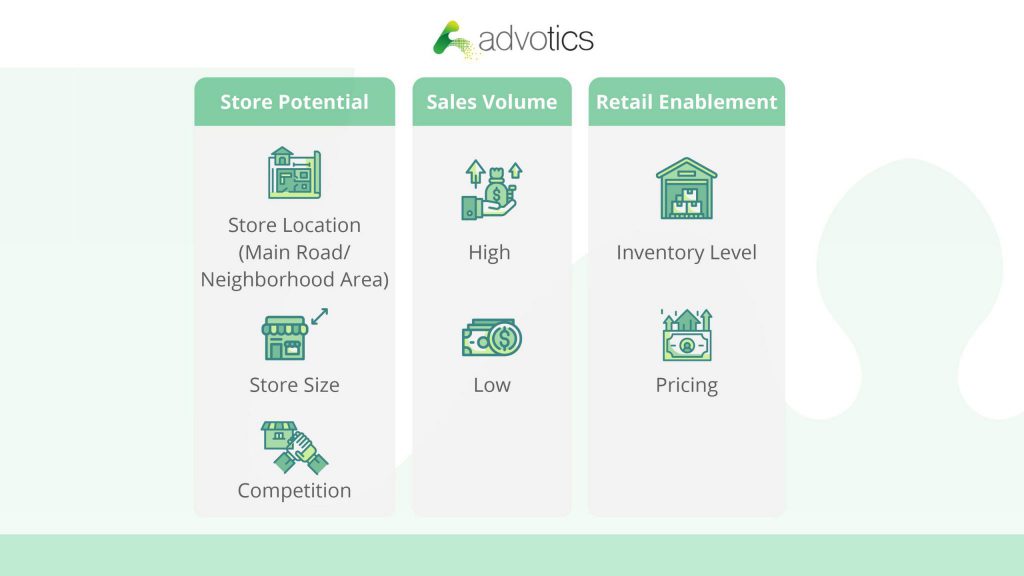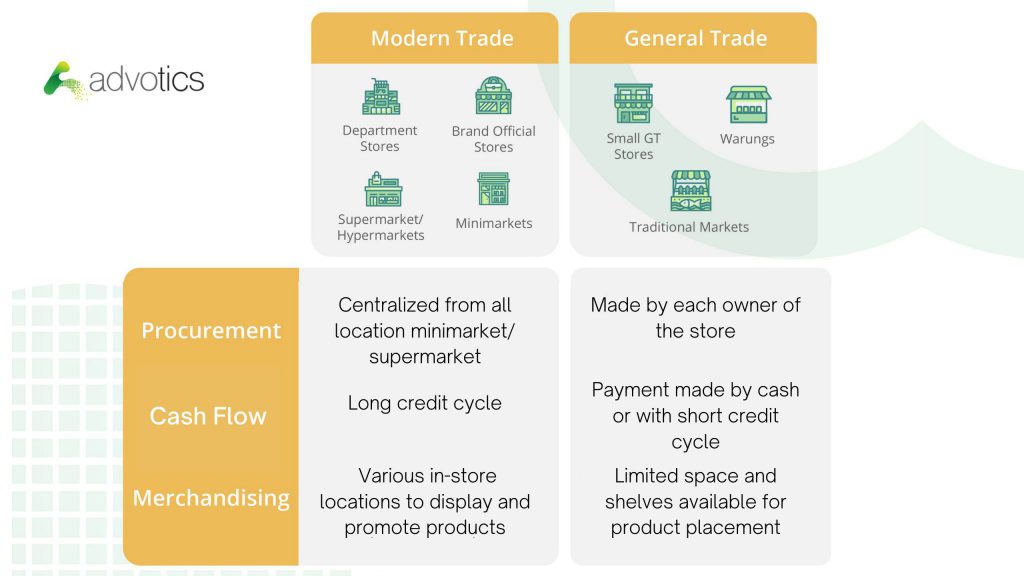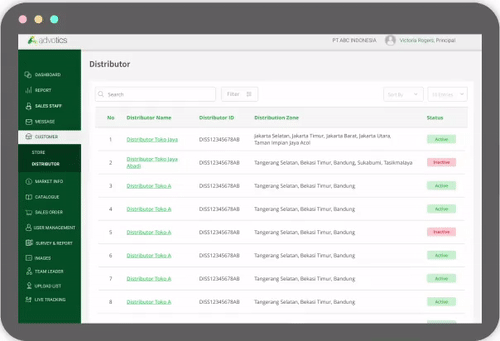
Different Ways to Manage Modern Trade vs General Trade
Table of Contents
Given the differences in buying behavior and sales channel fragmentation, Principals who are successful in managing both Modern Trade (MT) and General Trade (GT), usually adjust their route-to-market model according to the needs of the two channels.
Definition of General Trade vs Modern Trade
General trade or traditional trade are stores that are owned by individuals and usually cater to local customer requests. Customers in Indonesia tend to go to general trade to shop for last-minute food and other household needs.
Modern trade is usually a chain store such as hypermarkets, supermarkets, and minimarkets whose operations (inventory, logistics, merchandising) are more organized than general trade. Because the store area is wider and tends to be farther from residential areas, modern trade tends to be visited for more planned monthly shopping.

Why Manage Both Channels Differently?
Modern Trade
A chain store network with multiple locations run by a management team with centralized procurement allows principals to manage stores directly without distributors.
According to McKinsey-Nielsen’s research, principals who are successful in managing modern trade are those who tailor products and promotions specifically based on insights gathered from strong partnerships. To carry out this initiative, ~55% of modern trade accounts are served directly by the principal.
General Trade
While general trade is usually owned by individual entrepreneurs, relatives, or even families. Procurement is usually through intermediaries such as distributors and retailers. Therefore, to maintain product quality, principals can collect store performance information from salesmen and merchandisers who visit stores. In addition to each store, principals also need to work closely with distributors in ensuring the most optimal route-to-market for distributing products to final customers.
With thousands of general trade stores to manage, it is impossible for the principal to analyze each store separately but also not to treat all of them the same. Store segmentation is key to personalized stores, whether based on sales performance, potential demand in a particular area, or other variables.
How do Principals manage omnichannel effectively?
Identify product market segments according to sales channels

Implementation in CRM technology
Cloud-based Advotics Customer Relationship Management (CRM) can ensure that all company data is stored securely and can be updated in real-time easily by anyone and anytime. This platform can connect all client information (distributors, shops, etc.) ranging from sales, marketing campaigns, customer support for clients, to sales forecast data.




